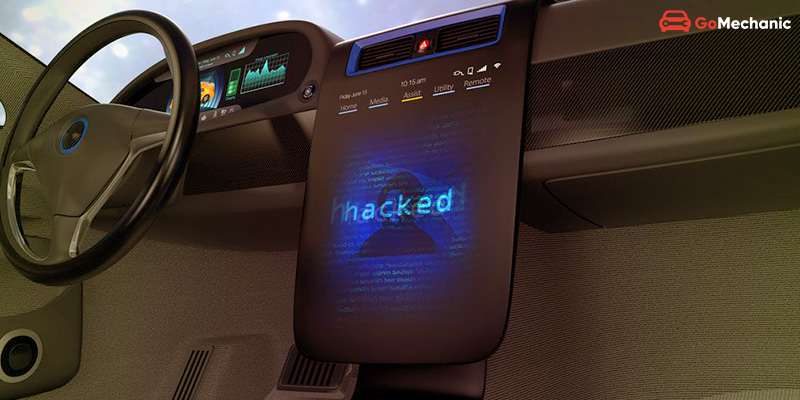Car hacking has emerged as a significant threat alongside the evolution of automotive technology. This guide delves into how it works, the risks involved, and prevention strategies to safeguard your vehicle.
How Automobile Hacking Works
Hacking can be understood through its primary attack vectors:
- Remote Exploits: Utilizing wireless communications like Bluetooth, Wi-Fi, and RF signals for unauthorized access.
- Physical Access: Gaining direct entry via the OBD-II port, allowing extensive control over the car’s systems.
- Software Vulnerabilities: Similar to other digital devices, cars’ software can contain exploitable faults.
- Supply Chain Attacks: Introducing vulnerabilities through compromised components from suppliers.
Common Targets and Systems
Hackers often target:
- Infotainment Systems: The hub for many of a vehicle’s networked features.
- Electronic Control Units (ECUs): These control up to 70 vehicle systems, making them a prime target.
- Telematics Systems: Responsible for navigation and emergency services, their compromise can reveal a vehicle’s location and more.
Methods and Equipment used by Car Hackers

Key hacking methodologies include:
- Man-in-the-Middle (MitM) Attacks: Intercepting communications to manipulate data.
- Reverse Engineering: Analyzing software to find vulnerabilities.
- Brute Force Attacks: Trying various combinations to gain unauthorized access.
Types of Car Hacking
Hacking attempts can be categorized as:
- Remote Exploitation: Including key fob and telematics system hacking.
- Direct Physical Access: Such as OBD-II port hacking and ECU tampering.
- Network-Based Attacks: MitM and CAN bus hacking are common tactics.
- Emerging Technologies and Methods: Like V2X hacking and sensor spoofing.
Evolution of Automotive Technology
The shift from mechanical systems to connected and autonomous vehicles has introduced cybersecurity risks. Key developments include:
- The Early Days to ECUs: Marking the beginning of computer-controlled functions.
- Rise of Connectivity: Incorporating infotainment systems and external communication capabilities.
- Emergence of the Connected Car: Making modern vehicles a “hacker’s playground.”
Risks Associated with Automobile Hacking
The implications of car hacking extend to:
- Safety concerns: Compromised vehicle control and tempered safety systems.
- Privacy Invasion: Unauthorized access to personal data and location tracking.
Real-World Incidents of Automobile Hacking
Notable incidents highlight the reality of car hacking risks:
- Jeep Cherokee (2015): Remote hacking incident leading to a massive recall.
- Tesla Model S (2016): Compromised through a security flaw, later fixed by an OTA update.
- Nissan Leaf (2016) and Volkswagen Key Fob (2016): Demonstrated vulnerabilities in app security and keyless entry systems.
Hidden Signs of Car Hacking

Indicators that your vehicle may have been compromised include:
- Unusual Car Behavior: Such as unexpected feature activation or performance issues.
- Suspicious Keyless Entry Activity: Difficulty locking/unlocking or unexpected battery drain.
- Unexplained Data Usage: Increases in data consumption without clear reasons.
Car Hacking Prevention Strategies
Protecting your vehicle from hacking involves several key measures:
- Regular Software Updates: Patch vulnerabilities by keeping the vehicle’s software up-to-date.
- Keyless Entry Security: Use signal-blocking solutions and be mindful of key fob security.
- Public Charging Stations: Exercise caution to avoid data risks.
- Invest in Additional Security: Consider using Faraday bags and steering wheel locks for added protection.
The Role of Manufacturers
Automakers are integral to preventing car hacking by:
- Implementing Advanced Encryption and secure software development practices.
- Conducting Regular Security Audits and offering over-the-air updates.
- Collaborating Within the Industry to share best practices and adhere to security standards.
Future of Automotive Cybersecurity
Emerging technologies like AI and blockchain offer promising solutions for enhancing vehicle cybersecurity through anomaly detection, predictive analysis, and secure communications.
Legal and Regulatory Landscape
Regulatory frameworks, including the NHTSA guidelines in the US and UNECE WP.29 regulations in the EU, are establishing cybersecurity standards for vehicles to ensure a unified approach to mitigating hacking risks.
How to Respond if Your Car is Hacked
If you suspect a hack:
- Document any unusual vehicle behaviors.
- Disconnect the vehicle from the internet.
- Contact the manufacturer for software updates.
- Consult cybersecurity professionals and report the incident to law enforcement if necessary.
Conclusion
Car hacking is a critical issue in the era of advanced automotive technology. With vehicles increasingly becoming targets for cyberattacks, it’s vital for manufacturers to employ strategies like advanced encryption, regular security audits, and over-the-air updates. Vehicle owners must remain vigilant, regularly update their car’s software, and adopt additional security measures like signal-blocking pouches. Emerging technologies, such as AI and blockchain, hold promise for enhancing cybersecurity. Everyone involved, from automakers to drivers, needs to stay informed and proactive to navigate the evolving legal landscape and safeguard against the multifaceted threats of car hacking.





